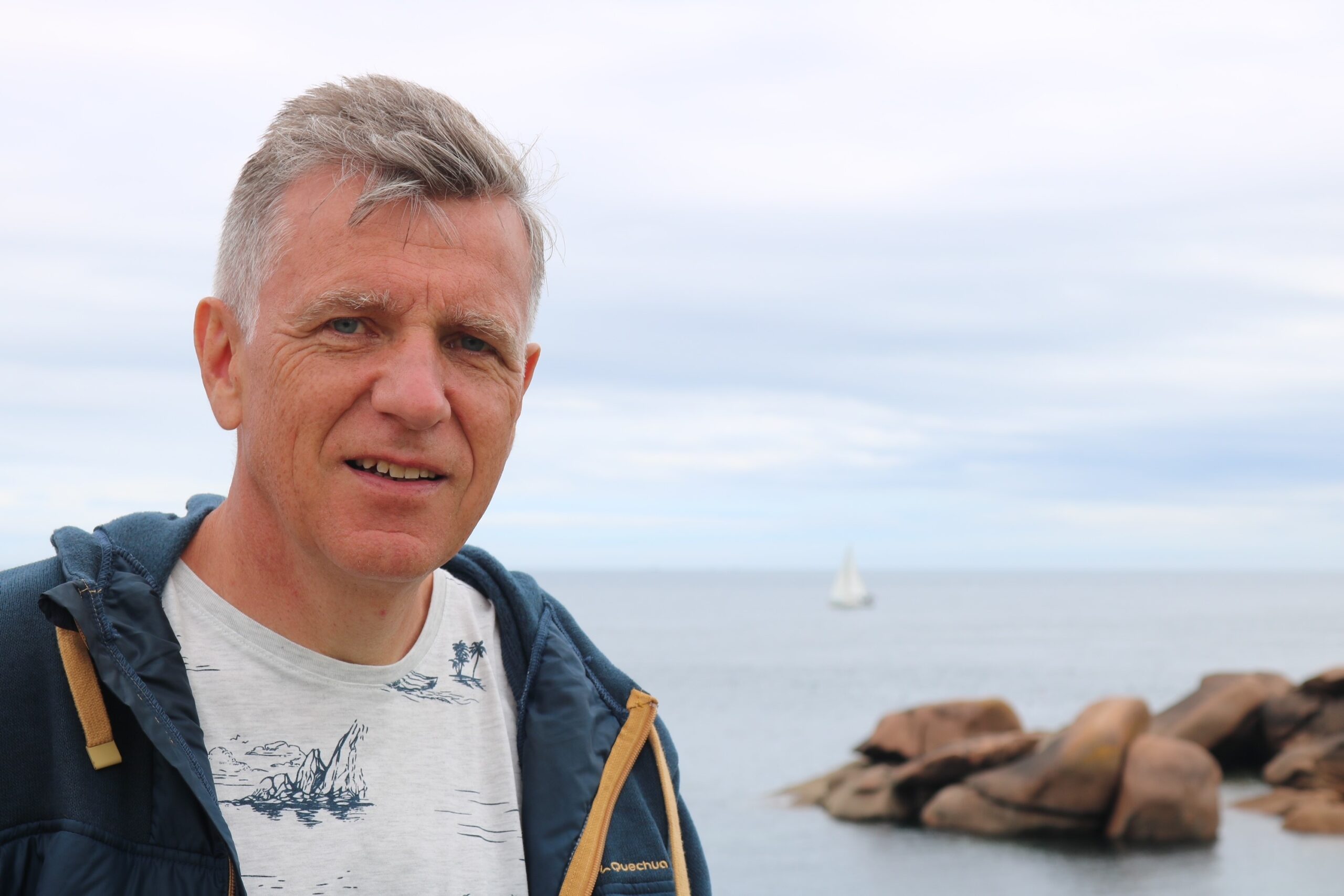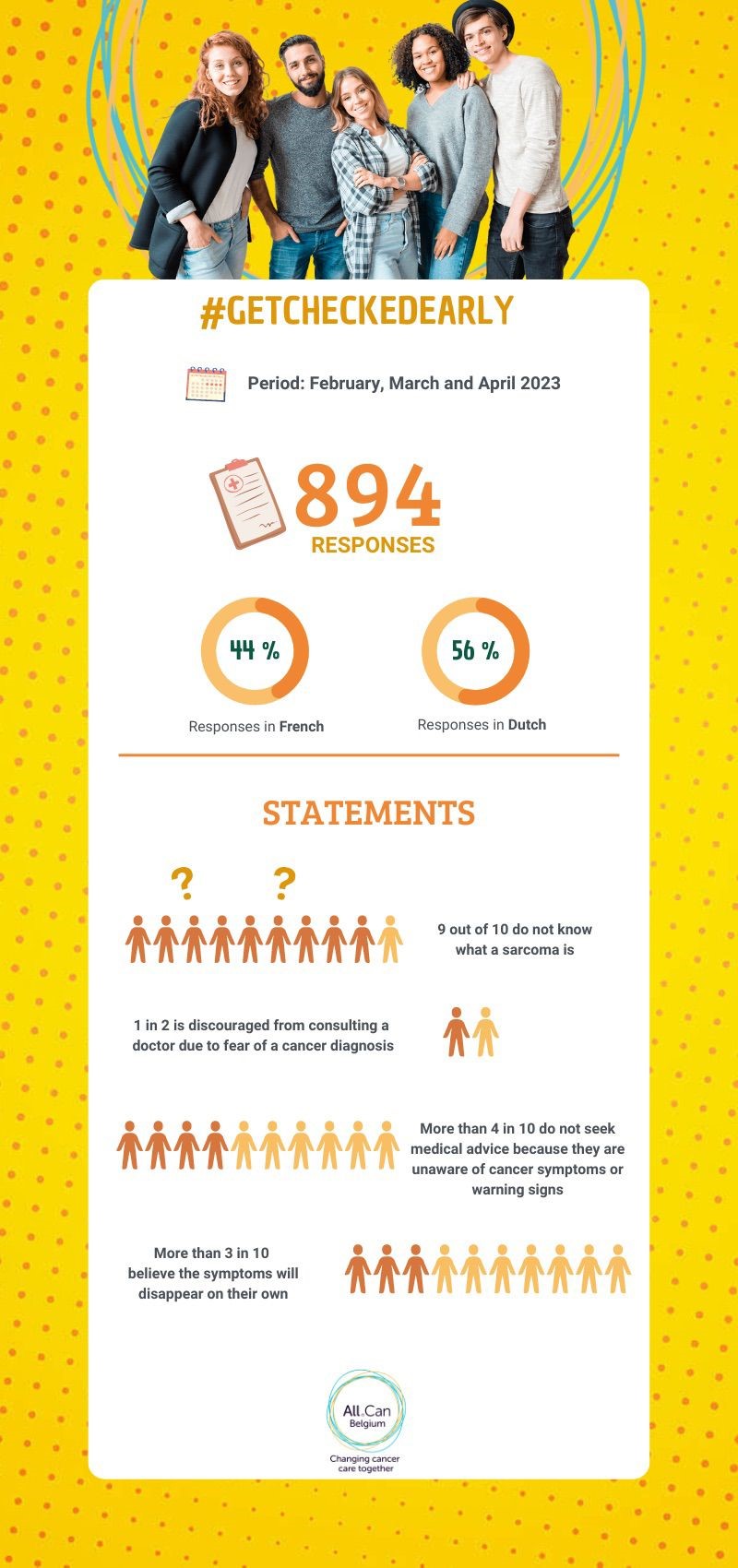What is a sarcoma?
A sarcoma is a malignant tumour that develops in the connective tissues, which are tissues that surround and support various organs in the body. Soft tissue sarcomas occur in the soft connective tissues, such as muscles and tendons, nerves, blood vessels, fat and skin. Bone sarcomas are malignant tumours in the hard connective tissues, namely bone and cartilage tissue.
Soft tissue sarcomas constitute the largest group at 90%. They are found throughout the body and there are numerous species and sub-species. Only 10% of all sarcomas are bone sarcomas. Bone sarcomas can also basically be found all over the body, but they mostly arise in the arms and legs and in the pelvis.
Sarcomas are thankfully rare
According to the most recent publication of the Cancer Registry Foundation (Bone & soft tissue tumour epidemiology in Belgium, 2004-2019), the number of new diagnoses remains fairly stable year on year at around 1175 per year, meaning that 3 Belgians per day are told they suffer from this disease. Sarcomas are thus not only very diverse, but also rare: together, they account for less than 2% of all malignant tumours. However, their share does vary with age. While sarcomas in children and adolescents (0-19 years) account for more than 10% of all cancers, it is still 5% in young adults (20-39) and only 1% in over-70s.
Sarcomas are still unknown
In the first half of this year, All.Can Belgium organised a survey. Responses from the nearly 900 respondents revealed that nine in 10 do not know what a sarcoma is. Fear of a cancer diagnosis stops one in two from consulting a doctor. More than four in 10 do not seek medical advice because they do not know the symptoms or warning signs of cancer, and more than three in 10 because they are convinced that the symptoms will go away on their own.
What should you pay attention to?
The survey results are worrying but not surprising. Soft tissue sarcomas usually do not hurt initially and are therefore harder to detect. Typical symptoms include a sudden change under the skin, such as a swelling or lump that continues to grow, a hard sphere that does not move in relation to the skin or skin that is more bloody at the level of the swelling. Complaints associated with deeper soft tissue sarcomas depend on the location and size of the tumour: bloating, abdominal pain, constipation, blood in your stool, problems with urination, vaginal bleeding, prolonged nasal congestion, poor hearing, earache, headache, squinting, nausea, vomiting, etc. Unlike soft tissue sarcomas, bone sarcomas are indeed painful. Depending on the location and size of the tumour, localised swelling may be seen, and if the tumour presses on a joint, you may experience discomfort with certain movements.
Do not hesitate: contact your doctor
“It is not the intention that people should worry at the slightest inconvenience,” Prof assures. Dr Ahmad Awada, head of the Department of Medical Oncology at the Jules Bordet Institute and chairman of the board of directors of All.Can Belgium. “But the lack of knowledge about the symptoms of a sarcoma leads to late diagnosis of this type of tumour, which is more common in young people. With rapidly increasing swelling of the skin or muscles, for example, and persistent pain, it is important to react quickly. Because if it turns out to be a sarcoma, it is important to catch it early: treatment is then less invasive and the prognosis more favourable. It is also essential that medical care is provided by experts in the field of sarcomas.”








